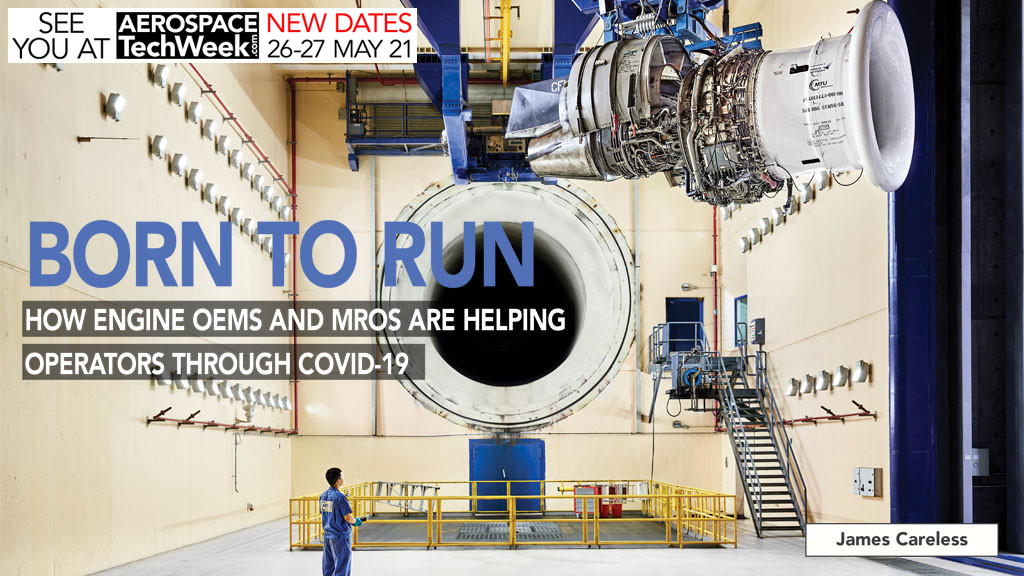The catastrophic travel slump caused by COVID-19 has resulted in thousands of aircraft being grounded worldwide. This unprecedented situation has substantially disrupted aircraft maintenance and overhauls, including in the critically important engine sector.
Mindful of the severe economic challenges their customers continue to face during the pandemic, engine OEMs and MROs are doing their best to assist them through this crisis. Aviation Maintenance magazine spoke with the OEMs and top MROs to find out what they are doing
to help.
COVID-19’s Impact
Understanding the engine MROs’ responses to COVID-19 begins with assessing the pandemic’s impact on themselves and their aircraft clients. To put it simply, everyone has been experiencing real economic pain.
“The effect of the COVID-19 pandemic on our business was immediate. As many airlines grounded their fleet at least to some extent, the need for full overhauls declined quite drastically,” says Marc Wilken, Lufthansa Technik’s senior director of Product Sales/Engine Services. “Airlines [who were] still operating kept those aircraft in the air that did not require any major cash injection like engine overhauls or big base maintenance events.”
At Pratt & Whitney, “Aircraft and engine utilization was significantly impacted during the pandemic, though we are seeing narrow-body aircraft return to service as the domestic markets recover, and continued strong demand in the cargo segment,” says Joe Sylvestro, the company’s vice president of Global Aftermarket Operations. The ways in which aircraft owners/operators have responded to this trend – and the impact it has had on Pratt & Whitney – depends on their specific financial circumstances. “Some customers are taking advantage of this period as a time to get some needed maintenance completed while others are deferring maintenance if possible in accordance with their revised business and fleet plans,” Sylvestro says.

VP, Pratt & Whitney
Pratt & Whitney’s experience has been shared by other engine MROs such as GE Aviation and StandardAero.
“We are adjusting our MRO operations to align with reduced market demand and evolving customers’ needs,” says Mike Hoffmeister, GE Aviation’s general manager of Customer & Product Support. “For our legacy engines, we adjusted our engine induction schedule and spare parts forecast accordingly. A positive dimension resulting from the crisis has been the opportunity to accelerate our upgrade program for the GTF engine fleet, especially retrofits of the low pressure turbine to improve the fleet health to ensure our customers are well-positioned for the recovery. To this end, we are expanding the GTF MRO network capabilities and capacity globally to support customers as the fleet continues to grow.”
“StandardAero’s commercial aviation sector has clearly been the hardest hit, and we have seen a direct impact to our commercial engine MRO volumes,” adds Jeff Poirier, VP/GM of StandardAero Turboprops and Fleets. The only good news is that the company’s broad portfolio of commercial aviation, business aviation, military, helicopter and component repair businesses is “offering us some insulation from the more immediate impact of the pandemic,” he says.
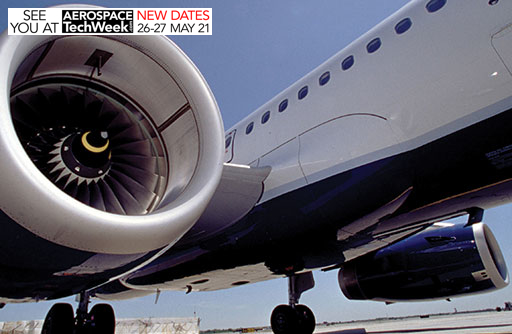
Pivoting to Survive
Pivoting is the buzzword of the COVID-19 era. It refers to refocusing a company’s business activities to pursue sales where work is available and to turn away from sectors where it is not.
To help their aircraft customers survive, the world’s engine MROs have had to pivot. Doing this successfully hasn’t been easy. “The initial challenge was understanding the magnitude and speed of change within our airline customer base, many of whom were dealing with operational hours, fleet forecasting and hypothesis for their own capacity,” says Carl Glover, vice president Sales & Marketing – Americas with AAR’s Aviation Services Group.
Having assessed the new normal of COVID-19 and how it is affecting demand for engine MRO services, AAR went back to the strategic drawing board. “This then proceeded to a game plan for dealing with customer needs on capitalization of fleets, assets and flexible ways to work through the pandemic,” Glover told Aviation Maintenance. “For instance, we had some cargo customers who were heavily involved in the movement of support for global PPE, healthcare assistance and freight who we focused upon for operational reasons.”
Like AAR, Rolls-Royce has undertaken a similar reassessment; one that has consumed a lot of unplanned in-house hours. The reason: “Our customers still have the same number of aircraft, but the utilization has changed – so while the number of aircraft flying at any one time has reduced, in fact our workload has increased, because we now have to understand new customer requirements,” says Lee McConnellogue, Rolls-Royce’s senior vice president of Aircraft Availability Services. “That means additional maintenance schedules for those in service, and challenges such as engine storage, preservation, and the creation of proactive maintenance plans to allow customers to be ahead of the curve for when times improve.”
If this isn’t enough, engine MROs have had to become ultra-responsive to clients whose normal business practices – based on pre-pandemic business projections – have been thrown into chaos. This includes supporting airlines revising their engine maintenance plans now that corporate revenues have become uncertain with no return predictability anywhere in sight.
“Customer decision-making (has) slowed down as we worked through the new norms and rhythms of demand,” says AAR’s Glover. “What was clear was once they made a decision, we had to be reactive and flexible to support them; whether that be inventory, component repairs or hangar capacity.”
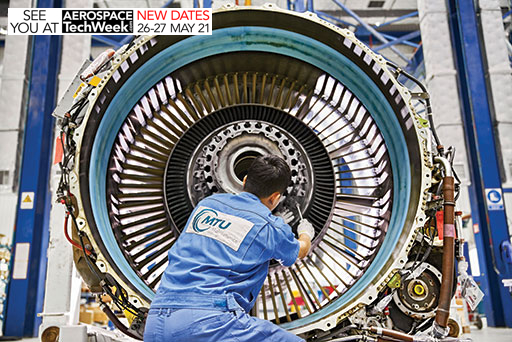
Motivated to Help
The financial health of engine MROs is directly tied to the success of their aircraft owner/operator clients. So it is clearly in the MROs’ self-interest to do everything they can to help owner/operators survive the pandemic.
Engine MROs also want to help their clients during this difficult time because they are all in the same business together; namely aviation, which is as much about the passion of flying as it is the pragmatism of paying the bills. As a result, the motivation that engine MROs feel to assist aircraft owner/operators is genuine.
How these engine MROs are helping varies from company to company. But overall, engine MROs are responding to COVID-19 by learning what their clients are doing to cope and then supporting those efforts.

“Some airlines are concentrating on short-term savings with cash preservation as the main objective, while others are focusing on long-term planning,” observes Martin Friis-Petersen, SVP of MRO Programs with MTU Aero Engines. “MRO providers must flexibly meet both these goals to provide the best solution for customers in today’s market. Further, we have been seeing more of a focus on on-wing/near-wing repairs, smart repairs, smaller workscopes and an increased usage of used serviceable material. This is because MRO decisions have been almost exclusively budget-driven in recent months.”
Pratt & Whitney says they are working closely during this period to advise and assist their customers. “We’re providing guidance and training on engine preservation requirements and supporting return to service operations to minimize any potential issues,” adds Sylvestro. “Through flexible service offerings, we are actively supporting our customers’ fleet planning and maintenance schedule adjustments. Where it makes sense for our customers and Pratt & Whitney, we are assessing contract terms to create more joint value in the long term.”
Meanwhile, “AAR’s MRO network domestically and in Canada is involved in supporting our customers with both short and long-term storage solutions,” says Glover. “Some aircraft have had components removed to support non-stored fleets so this represented some challenges to have component availability.”
GE Aviation says it is focused on being flexible during COVID-19, adjusting its services and procedures as necessary to align with its clients’ adjusted operational strategies. To make this happen, “some activities to support airline and other operator fleets to keep them in the air have changed,” says Hoffmeister. For example, he says, “earlier this year, new guidelines were provided for engine covering solutions when more covers were needed at once globally due to parked aircraft. We’ve also kept our engine preservation and de-preservation recommendations updated. In cases where our customer support teams would normally be on site, we’ve arranged customer virtual training for engine borescope inspections for airline mechanics, which have been well received.”
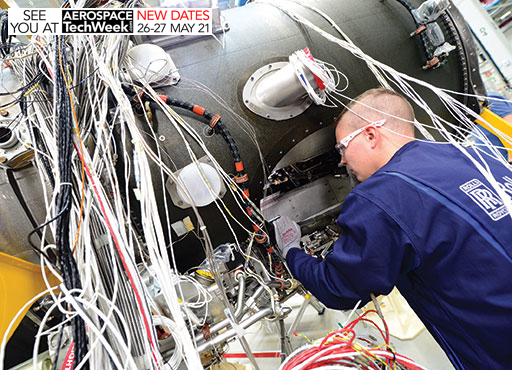
For any GE engines that have been grounded during COVID-19, GE Aviation field service and customer support teams have been working with aircraft owner/operators to proactively perform maintenance actions related to engine preservation, returning engines to service and complying with Service Bulletins. “The unique challenge, as a result of the pandemic, is the scale and number of impacted commercial aircraft engines at a given time,” Hoffmeister stresses. “To address this, we’ve released “Maintenance Minute” videos with fleet-wide recommendations for mechanics and technicians, and offered tailored virtual training. GE is also prioritizing individual customer questions to provide a quick response.”
All of these changes notwithstanding, the fundamentals of engine MRO service remains the same; namely to keep aircraft engines properly maintained and overhauled in accordance with their manufacturers’ guidelines. So despite the unique adjustments made by MROs to better serve their clients during COVID-19, “our global base of clients are primarily requiring the same services as prior to the pandemic; namely maintenance, repair and overhaul in addition to engine condition trend monitoring (ECTM) support,” says StandardAero’s Poirier. This said, “we have provided engine preservation services to a number of customers who parked their aircraft following the onset of the pandemic earlier this year, and have also provided return to service (RTS) support to those operators who have since resumed flying.”
Restoring Parked Engines to Service
On July 23rd, 2020, the Federal Aviation Administration (FAA) issued Emergency Airworthiness Directive AD 2020-16-51 for Boeing 737 NG and Classic aircraft engine bleed air 5th stage check valves. “Corrosion of the engine bleed air 5th stage check valve internal parts during airplane storage may cause the valve to stick in the open position,” said AD 2020-16-51. “If this valve opens normally at takeoff power, it may become stuck in the open position during flight and fail to close when power is reduced at top of descent, resulting in an unrecoverable compressor stall and the inability to restart the engine.”
The AD 2020-61-51 applies to approximately 2,000 U.S.-registered Boeing 737 NG and Classic aircraft that have been in storage. This AD warns that those engines could have corrosion that could lead to a dual-engine failure. Since complying with AD 2020-16-51 requires these 737 owner/operators and inspect these valves before resuming flight, the potential impact on airlines trying to restore pre-pandemic service levels is profound.
Engine MROs like CFM International, a 50-50 joint venture between GE Aviation and Safran Aircraft Engines, is aware of the problem and has been working on it. “This action is related to a Boeing external bleed air valve that interfaces with the engine,” says Hoffmeister. “We are working closely with Boeing in its resolution of this issue.”
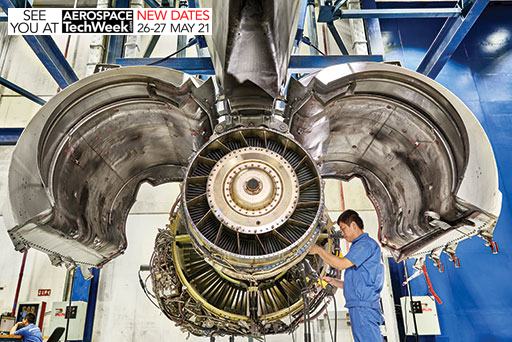
CFM International isn’t alone in tackling this issue. “The 5th stage valve topic was one we assisted some of our clients with in both our Amsterdam and New York shops; both are OEM approved for the valve overhaul,” says AAR’s Glover. “We had some other RTS (Return to Service) tasks identified during checks, but are fortunate that most of our customers that we were storing aircraft for are MRO clients who are close to our respective maintenance and engineering groups.”
The fact that these 737s suffered valve corrosion problems is due to so many of these aircraft being unexpectedly grounded on short notice. But even during chaotic events such as COVID-19, this problem is avoidable. “The important thing was for any engine placed into short- or long-term storage to have been prepared properly and this is something that our service team has been able to assist customers with,” says StandardAero’s Poirier. “A key step is to ensure that any exposed gears and bearings are oiled and covered, in order to avoid corrosion from humidity.”
This air valve corrosion issue underlines the importance of proper aircraft maintenance at all times; even during pandemics. “Grounding aircraft for an uncertain period of time and reactivating them, sometimes on very short notice, is a complex task,” says Lufthansa Technik’s Wilken. “Talking specifically about engines, we have created a service package which includes engine care during storage itself like preservations, re-inspections and the rectification of findings but also services during reactivation like engine washes, (doing) any repair work required and engine/module swaps.”
“Additional inspections should be performed on parked and during aircraft transition events,” added MTU’s Friis-Petersen. “As a result, we have seen increased requests for engine services. Upon industry restart, we expect the number of requests to increase further.”
New Opportunities
Like many disruptive events, the impact of COVID-19 upon the aviation industry has opened up new opportunities for engine MROs. “For example, many freighter operators saw very strong demand and almost no interruption in their business,” says Wilken. “Here we were able to attract engine business from these customers.”

Lufthansa Technik is also seeing increased demand for its localized Mobile Engine Services repair station network. With bases in Frankfurt (Germany), Montreal (Canada), Tulsa (USA) and Shenzhen (China), the company can dispatch mobile repair crews to affected aircraft equipped with CFM56-5B/-7B and V2500 engines.
As well, remotely-delivered services are increasingly popular with engine MRO customers. A case in point comes from AAR. “We have seen an increase in demands for remote reporting, digital imagery of components alongside inspections, and engineering reports all in the shared digital space,” says AAR’s Glover.
The same is true for GE Aviation: “Before COVID-19, aircraft and jet engine mechanics would travel to one of GE’s or CFM International’s training centers for hands-on learning,” says GE Aviation’s Hoffmeister. “Now, due to global travel and social distancing restrictions during the outbreak, more training is being delivered to customers on their laptops and mobile phones.”
Starting in July 2020, GE has held a series of webinars to teach customers how to use GE’s and CFM’s self-service customer portals in order to make service requests and share critical data.
Looking Ahead
There’s no two ways about it; COVID-19 has been absolutely brutal to the global aviation industry. And the future is equally uncertain.
“In terms of business, 2020 will be a very bad year; no doubt about that,” says Lufthansa Technik’s Wilken. “The engine MRO sector is suffering overall and will take some time to recover. However, we see ourselves well-prepared to manage this crisis and to get out maybe even stronger than before.”
“The outlook varies by segment and by geographic location. A number of markets have seen little or no impact, with our military and freight/cargo operator base remaining relatively untouched by the downturn,” says StandardAero’s Poirier. “In general, our regional airline operators are in better health than the long-haul segment, and we are hopeful that the industry’s gradual recovery will continue over the coming months and years.”
“As the crisis is on-going and developments in particular regarding travel regulations and restrictions are continually developing, this is hard to predict,” says MTU’s Friis-Petersen. “Generally speaking though, we are seeing the benefits of our flexible #SmartNewNormal approach, have been inducting customers’ engines, and are confident we will recover even stronger from the effects of this crisis.”
“After a period of grounding, it’s good to see some aircraft coming back into service,” agrees Jacqui Sutton, Rolls-Royce’s chief customer officer – Civil Aerospace. “(But) It’s clear that the industry will take several years to recover to pre-COVID-19 levels, but aviation is a resilient industry.”
Whatever happens in the months to come, “we’re keeping close contact with our customers to ensure that we are positioned for when they need us,” says AAR’s Glover. “The road to recovery is anticipated to be a lengthy process beyond the horizon of 2020, so as a company we’re focused on short-, medium- and long-term demands.”
“The aviation services business is driven by aircraft utilization,” concludes GE Aviation’s Hoffmeister. “While it’s too early to predict when the commercial aviation recovery worldwide will happen, there are encouraging early signs of improvement in pockets of the world, such as China.”
